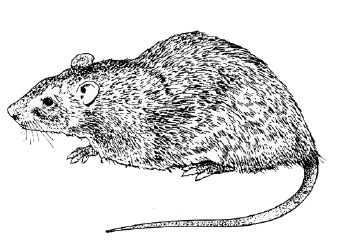Exposure to Wild Animal Feces
There are a minimum of 39 important diseases that people catch directly from animals, 42 important diseases that people get by eating or touching food or water contaminated with animal feces, and at least 48 important diseases that humans can get from the bite of bugs that feasted on an infected animal. It’s a rough world out there in nature.
WARNING: Exposure to Animal droppings (feces) even from domestic Pets is a biological hazard that requires safety precautions
Cleaning up Urine & Feces
- Take precautions before and during clean up of infested areas.
- Before cleaning, trap the animal and seal up any entryways to ensure that they can’t get in. Continue trapping for a week.
- Before starting clean up of the space, ventilate the space by opening the doors and windows for at least 30 minutes to allow fresh air to enter the area. Use cross-ventilation and leave the area during the airing-out period.
- It is important that you do not stir up dust by sweeping or vacuuming up droppings, urine, or nesting materials.
- Wear rubber, latex, or vinyl gloves when cleaning urine and droppings.
- Wear a dust mask
- Spray the urine and droppings with a disinfectant or a mixture of bleach and water and let soak 5 minutes. The recommended concentration of bleach solution is 1 part bleach to 10 parts water.
- Use a paper towel to pick up the urine and droppings, and dispose of the waste in the garbage.
- Place nesting materials in a plastic bag. Seal it and place it in a second bag. Seal that bag
- After the droppings and urine have been removed, disinfect items that might have been contaminated
- Next, clean and disinfect the whole area
- Spray the gloves being worn with the disinfectant before removing them
- Lastly, remove gloves, and thoroughly wash hands with soap and water
- Discard plastic bags with waste and nesting materials , gloves, mask, etc. in a covered trash can

